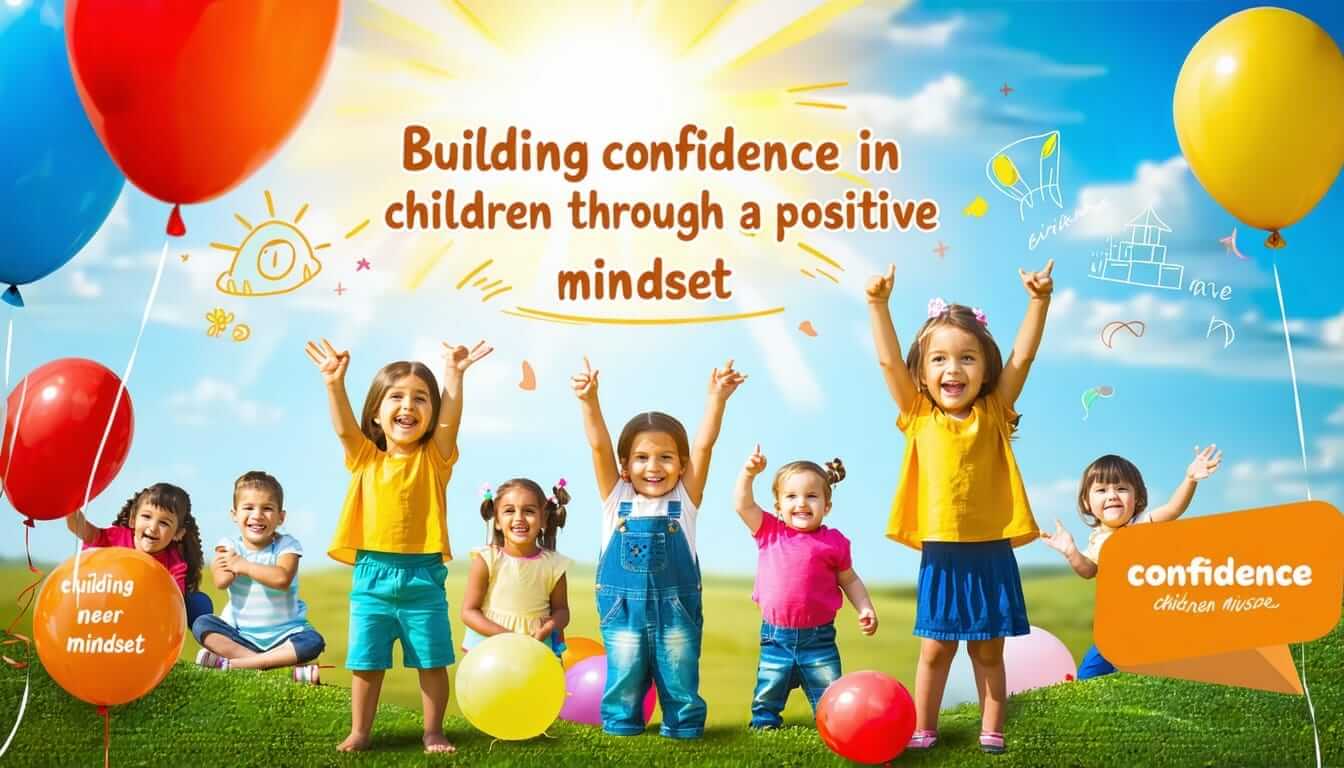Fostering a Positive Mindset in Children
Helping your kiddos think positively is a big deal for their growth and success. Incorporating smart tricks like social stories and visual schedules can boost their “Yes I Can!” spirit.
Exploring Social Stories
Social stories are like magic wands for guiding kids through their social jungle, teaching ’em the ropes of good behavior. Picture it as a short and sweet tale explaining how to greet folks or handle emotions. Studies even show these stories can nix habits like picking noses by reinforcing the good stuff. How neat is that? (Nevada Autism Center).
Using these stories is like giving your child a cheat sheet for tricky situations, helping them cruise through life with confidence. Craft these stories with your kiddo as the star of the show. It’s a cool way to connect and teach them to express themselves and read social cues like a pro.
Utilizing Visual Schedules
Visual schedules are a godsend for kids’ emotional well-being and managing tasks. They act like a GPS, helping kids remember what they need to tackle and when. This cuts down on stress and boosts their confidence because they know exactly what’s on their plate (Nevada Autism Center). Whether it’s a colorful wall chart or a simple whiteboard, these visuals can be game-changers.
Plop these schedules into your child’s everyday routine, and watch them thrive. They provide a roadmap of what’s ahead, giving your child the comfort of knowing what to do next. As they check off completed tasks, they’re chipping away at anxiety and building confidence, celebrating each tiny victory.
| Tool Type | Benefits |
|---|---|
| Social Stories | Cuts down on bad habits, teaches social skills |
| Visual Schedules | Boosts memory, eases stress, supports achievement |
By weaving in social stories and visual schedules, you’re setting up a nurturing space for your child’s positivity. These nifty strategies don’t just boost communication; they help sharpen your child’s emotional and social smarts. Want more tips on spreading positivity? Check out our resources on positive thinking activities for children and teaching children optimism and resilience.
Positive Reinforcement Strategies
Gotta say, positive reinforcement is like your secret weapon in shaping up those little rascals’ attitudes. It’s all about pumping up the good stuff they do with rewards they can’t resist. Experts are high-fiving this approach because it’s done wonders in getting kiddos to behave like champs (Nevada Autism Center).
Implementing Positive Rewards
Ready to dive into this reward thing? Here’s the game plan:
-
Spot the Good Stuff: What’s your kiddo doing that you wanna see more of? Ticking off their homework list, helping out with the dishes, or being sweet to others?
-
Pick the Goodies: Find what gets them grinning—stickers, hugs, extra time with their gadgets, or maybe some snacks.
-
Give a Pat on the Back – Quickly: Make sure the high-five (or whatever reward) follows hot on the heels of the good deed. Keeps them connecting the dots.
-
Stay Steady: Make it a pattern, so they know doing good equals fun stuff.
| Good Deed | Cool Rewards |
|---|---|
| Finishing homework | Praise, extra game time |
| Doing chores | Stickers, sweet treats |
| Sharing with siblings | Movie night together |
Shower them with thumbs-up for trying hard, not just for being born a genius. Leads to them acing school stuff (Positive Psychology).
Understanding Negative Reinforcement
Now, don’t mix these up: positive reinforcement ain’t the same as chasing away bad vibes (negative reinforcement). The latter’s more like taking away stuff they hate after they do something good—kinda like a reward but trickier. Sometimes folks mistake it as scolding, which ain’t cool. Swap negativity for cheering on the good stuff.
Going all negative can turn kids into doubters, making learning a bummer. Focus instead on the sunshine route, like offering pats on the back and talking up the good stuff they do.
Create a sunny vibe that celebrates victories, and resilience will bloom, giving your kiddo the spine they need to face life’s hurdles. Wanna dive deeper? Check this out: teaching children optimism and resilience.
Using this cheerful cheering strategy and getting a hang of behavior tweaks, you’re on the road to raising a “Yes I Can!” kiddo with a can-do outlook (developing a growth mindset in kids).
Role Modeling and Encouragement
Modeling Desirable Behaviors
You’ve got this enormous influence as a parent, kind of like being a superhero without the cape. How you act and what you do helps shape your child’s thinking. An easy way to put your kiddo on the path of positivity is by showing them behaviors you want to see in them. Basically, it’s like monkey see, monkey do, but in a good way! Show them the power of a pat on the back—cheer ’em on when they do good stuff. Turns out, giving your kid a thumbs up has a big impact on positive actions (Nevada Autism Center).
Ever notice how kids are little copycats? When they catch you handling a hairy situation with cool, calm vibes or saying nice things even when the chips are down, they’ll probably pick up those vibes themselves. Maybe it’s keeping your cool when the Wi-Fi decides it doesn’t want to work, or it could be saying “thanks” with a smile you actually mean. Bringing these actions into your daily grind gives your kid a roadmap for how to handle life.
| Behavior | Example |
|---|---|
| Gratitude | Saying “thanks” when someone lends a hand |
| Resilience | Talking through a tough moment without losing your cool |
| Kindness | Lend a hand even if no one’s looking |
Encouraging Effort over Ability
Here’s the scoop: boosting your kid’s confidence isn’t about telling them they’re smart. It’s about championing the hard work they put in. Cheer them on for hustling, not just because they’ve got the brains. Do that, and they might just surprise you by knocking their limits out of the ballpark (Positive Psychology).
Raise a toast to those wins—big or small—and you’re setting your child up to face new mountains. Focus on the learning dance, and not just getting the prize. Teach them to say, “Hey, it’s okay to feel a little grumpy sometimes,” and cover them with some sunshine talk to push any dark clouds away (Big Life Journal).
Hit them with words like “I’m proud you busted your tail on that” or “Love seeing you tackle stuff, even when it’s a tough nut to crack.” You’ll notice this grows their ability to roll with the punches and keeps their chin up high.
| Praise Focus | Example Phrase |
|---|---|
| Effort | “You put your heart into this project!” |
| Perseverance | “I dig how you kept at it even when it got rough.” |
| Learning from Mistakes | “Mess-ups are stepping stones to learning new tricks.” |
Try these pep talks to give your child that extra kick in the confidence to tackle life head-on. By keeping up the positive vibes, you’re filling up their toolkit to handle life’s ups and downs and soak up every little victory. Dive into more good stuff like positive thinking activities for children and teaching children positive thinking techniques, and let the good vibes keep rolling.
Cultivating a Growth Mindset
Getting your kiddo to think like a world’s their oyster is key to helping them bounce back from life’s hiccups. This outlook turns real-life hurdles into chances to learn and grow, not scary monsters under the bed.
Understanding Growth vs. Fixed Mindsets
In what’s probably one of the coolest things to come out of psychology, Carol Dweck introduced us to “growth mindset” and “fixed mindset.” So, what does this actually mean? Well, folks with a growth mindset reckon that brainpower and skills are like muscles—they grow when you work them out. This mindset means seeing a challenge and thinking, “Game on!” Kids who get these vibes tend to be more pumped and stick with it when the going gets tough.
Opposite end of the spectrum is the fixed mindset, where kids think they were either born with it or not. This thinking sneaks in, making them dodge challenges like they’re getting out of dodgeball because they dread failure. But don’t sweat it; pour on the praise for effort, practice, and learning from “oopsies,” and you can help them switch gears.
Here’s a handy cheat sheet:
| Growth Mindset | Fixed Mindset |
|---|---|
| Loves a good challenge | Ducks out of challenges |
| Doesn’t flinch at obstacles | Throws in the towel |
| Sees hard work as a win | Thinks effort’s a flop |
| Learns from the “ouch!” | Brushes off advice |
| Cheers for others’ wins | Feels all jelly about others’ wins |
Teaching the Power of Yet
Now, let’s talk about sprinkling some magic words into your kid’s vocabulary: the power of “yet.” It’s like telling your child, “Hey, so what if you didn’t nail it this time? You just haven’t mastered it yet.” This pep talk can totally flip their way of thinking about learning and tackling those challenges.
Next time Johnny says, “I can’t do this,” you can nudge him to add a “yet” at the end—”I can’t do this yet.” Sounds small, but it changes everything.
To bring the point home, try the “Yet Crown” activity. Kids can create a crown by jotting down what they’re still working on conquering. It’s like wearing a badge of empowerment, a constant nudge that they’re on their way to being awesome (Mental Health Center for Kids).
Giving your child a growth mindset is like handing them a superhero toolkit, turning, “Oh no, can I?” into “Heck yeah, I can!” To explore more fun ideas that encourage positive thinking, swing by our pages on positive thinking activities for children and developing a growth mindset in kids.
Emotional Intelligence in Education
Impact on Student Outcomes
Boosting emotional smarts in school can really crank up how kids do. When teachers are big on the emotional skills front, kids pick up those vibes. They end up getting better grades, causing less chaos in the classroom, and chilling out more. Plus, teachers who know their emotional ABCs tend to be happier in their jobs. And guess what? When teachers are happy, your kiddo blossoms in a feel-good school environment.
Here’s a little table for ya, pointing out the perks of emotionally savvy teachers:
| Benefit | Impact on Students |
|---|---|
| Better Grades | Smarter kids, understanding stuff quicker |
| Calmer Classroom | Less chaos, more focus |
| Reduced Stress | Handling life’s curveballs easier |
| Happier Teachers | A school vibe that your kid will love |
Benefits for Teachers
It’s not just the young ones who score from emotional intelligence, teachers get a nice slice of the pie too. Teachers high-fiving each other, and building solid friendships lead to a warm, fuzzy workplace. This vibe doesn’t just lift their spirits; it also means they’re less likely to hit the burnout wall. When teachers are in a good place, there’s more teamwork and genuine bonds sprouting up all over (Lillio).
Also, having a growth mindset works wonders at home. Parents with this outlook help their kids, especially when it comes to cracking open books and getting into reading. On the flip side, a set-in-stone mindset from the parents might put the brakes on Jr.’s learning adventure (Positive Psychology). By nudging both teachers and parents towards positive vibes, you’re building an armor of resilience and sunny outlooks for your child.
For more on weaving emotional smarts and sunny vibes into your kid’s life, check out our guides on teaching children optimism and resilience and fostering a happy attitude in kids. Dive in for some handy tips to give your child the emotional edge.
Practical Activities for Growth Mindset
Engaging your kid in activities that boost a positive mindset is super helpful for their growth. Check out these two fun ways to help them build a growth mindset: the Yet Crown Activity and the Kindness Challenge.
Yet Crown Activity
The Yet Crown Activity gets kids to tackle challenges by using the magic word “yet.” This simple exercise is all about showing them that even if they can’t do something now, with some time and effort, they can nail it.
Steps:
- What You Need: Paper, markers, a crown template.
- Make the Crowns: Help your little one decorate their crown with their name and some cool designs.
- Spot the Challenges: Get your child to list stuff they find tough but are itching to learn—like cycling or cracking a math puzzle.
- Flip Struggles into Wins: For every hurdle, have them jot it down, adding “I can’t do this… yet!”
- Rock the Crown: Urge your kiddo to wear their crown and cheerfully own their challenges as chances to grow.
This activity not only boosts self-awareness but also hammers home the idea that trying hard leads to getting better. For more ways to tap into positive thinking, check out our resource on positive thinking activities for children.
Kindness Challenge
The Kindness Challenge is a neat way to spread warmth and smiles. It helps children learn that their gestures can have a big impact, reminding them they’ve got the power to make someone’s day.
Steps:
- Pick a Duration: Choose a week or a month for the challenge.
- Make a Kindness Calendar: Together, create a calendar to track daily good deeds.
- Daily Goodies: Nudge your child to pull off small acts of kindness every day, like helping a buddy, sharing a toy, or paying someone a compliment.
- Think About the Effects: Each night, chat with your child about how their kind acts made them feel and how it touched others.
- Throw a Celebration: When the challenge wraps up, celebrate all the kind acts and talk about how kindness fuels a positive mindset.
This challenge not only lights up a positive attitude but also boosts their empathy and social smarts. For more on boosting self-talk and kindness, swing by our guide on promoting positive self-talk in children.
With these easy activities, you can cheer your child on to adopt an “I’ve got this!” attitude, crucial for fostering a positive mindset in children.




